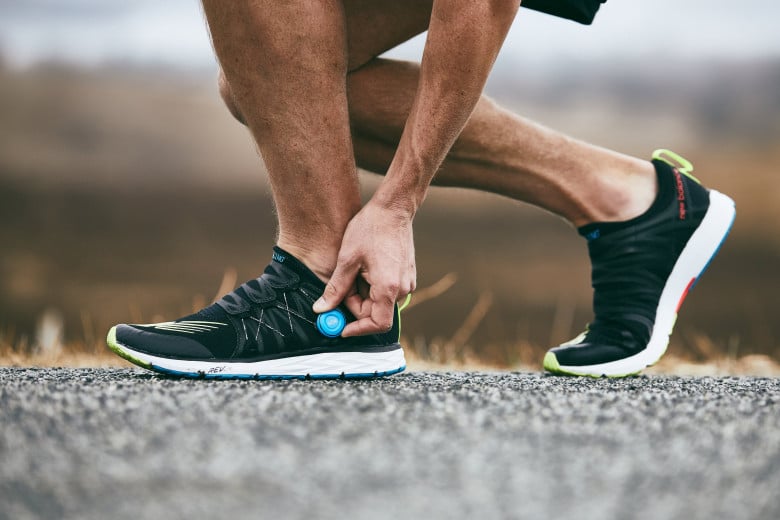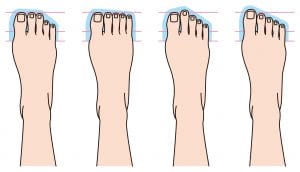Are You Wearing the Right Shoe?

Anyone who plans to spend time walking, fitness jogging or training for a running race needs to have properly fitting athletic shoes. The proper equipment will not only make your fitness activity more comfortable and enjoyable, but reduce your risk of injury as well.
How do you know if your shoes are right for you? Walking and running shoes come in three categories:
- Neutral trainer – for the high-arched, efficient runner
- Stability shoe – for the slight pronator
- Motion control shoe – for the severe over pronator or those with very low arches
Not sure about your foot shape? Look at this infographic below and see which example resembles yours:
Your individual foot and ankle mechanics will determine how your knees, hips and lumbar spine function. A well-designed running shoe will have intrinsic features built into the midsole to accommodate your specific biomechanics. Usually, when wearing the correct athletic shoe there will be no need for an additional orthotic. In fact, for long-term orthotic wearers, placing a precision-made custom orthotic inside of a poorly fitting athletic shoe will compromise the foot and ankle function.
Beware of buying shoes based on size number alone. Shoe companies will manufacture different models in different factories around the world. It is commonplace to change factories each year, therefore the fit of a specific model will change as well. But there is hope! The “Rule of Thumb” is always reliable.
“Rule of Thumb” of shoe fit:
- While standing in a potential running shoe, place your thumb between your longest toe and the end of the shoe. If the width of your thumb doesn’t fit in that space, the shoe is too short.
- While standing in the shoe you should be able to pinch some of the material next to your little toe. If you cannot, then the shoe is too narrow.
- While standing in the shoe, you should be able to spread your toes out freely as if you were playing a piano. If not, then the shoe is again too narrow.
Your foot and ankle mechanics should always be assessed by a skilled professional while walking barefoot and not while wearing a street shoe or worn-out athletic shoe. I recommend that you make a visit to a reputable running store and talk to a knowledgeable staff member who can answer your questions.
If you are still concerned about selecting the proper shoe, contact us to schedule a free running shoe assessment.
